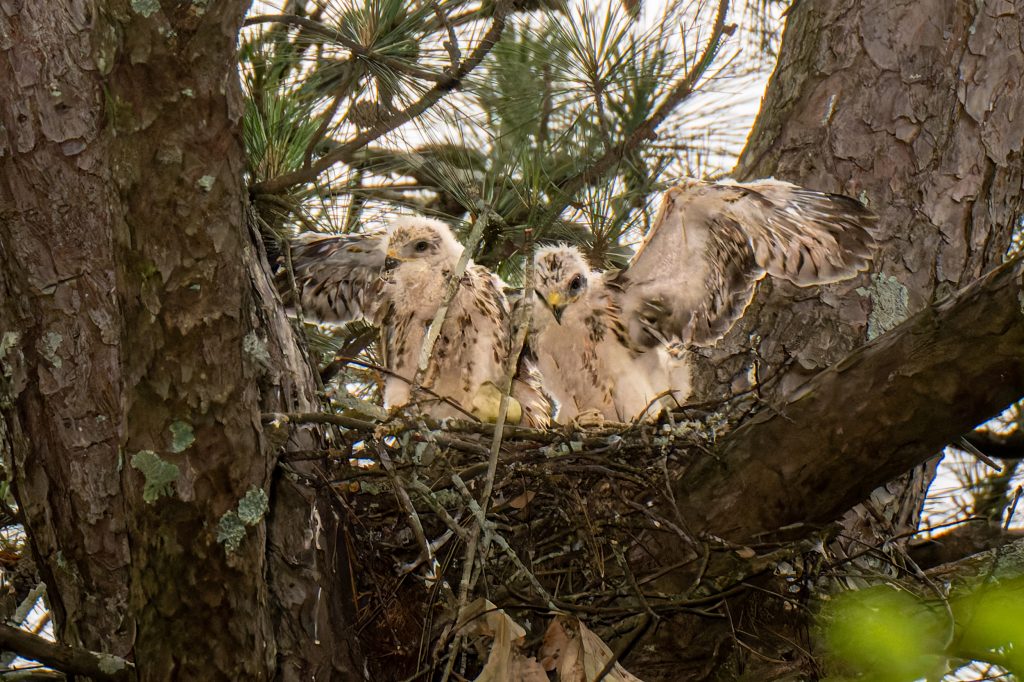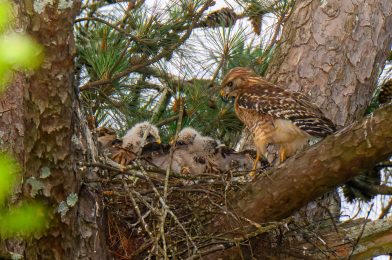[NIKON Z 9, VR 120-300mm f/2.8G, Mode = Manual, ISO 5000, 1/4000, ƒ/11, (35mm = 600) with Alienbees B1600 strobes]
In wildlife photography, capturing the essence of nature’s wonders often presents unique challenges. The past few days have been a journey of experimentation and innovation as I sought to elevate my photography of the Red-Shouldered Hawks nesting in our backyard. In this blog post, I’m excited to share with you how I revamped my approach, incorporating studio strobes and high-speed sync technology to overcome obstacles and enhance the quality of my images.
The catalyst for this transformation was a persistent issue I encountered—shadows casting over a significant portion of the majestic hawks, diminishing the clarity and impact of my photographs. Determined to find a solution, I turned to my trusty studio strobes, specifically the Alienbees B1600 equipped with an 11-inch Long Throw Reflector, typically utilized for illuminating indoor basketball courts.
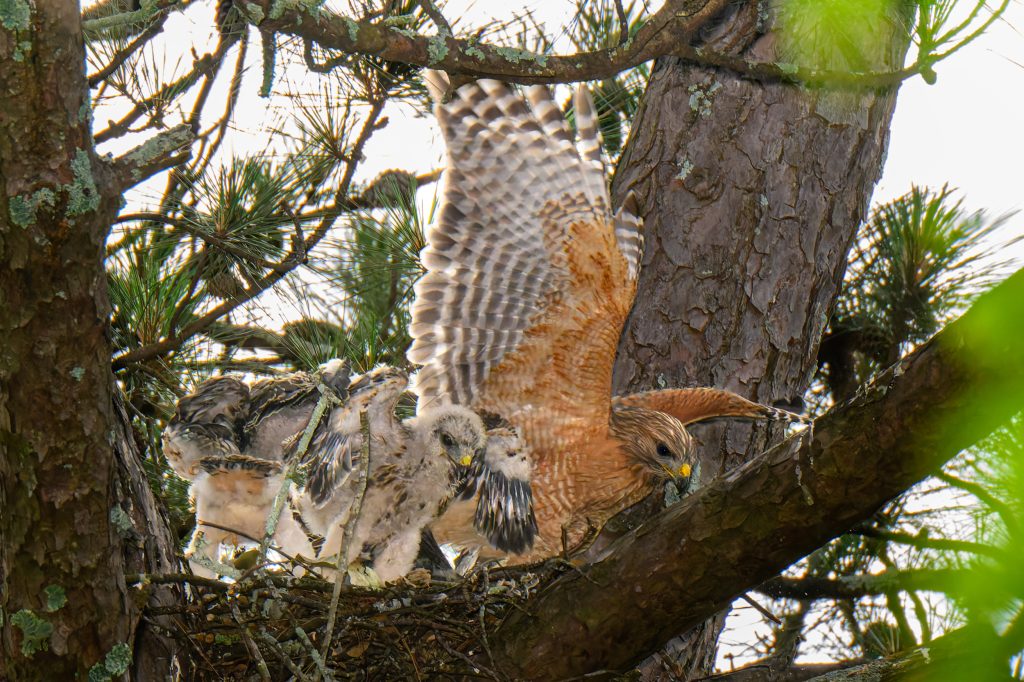
To synchronize the flash with my Nikon Z9 camera and shoot above the 1/250 sync speed, I employed PocketWizard TT5 transceivers paired with an AC3 controller to adjust the power settings and an AC9 adapter to combine with the PocketWizard TT5. A simple phone cord facilitated the connection to the back of the Alienbees B1600, seamlessly integrating the strobes into my setup.
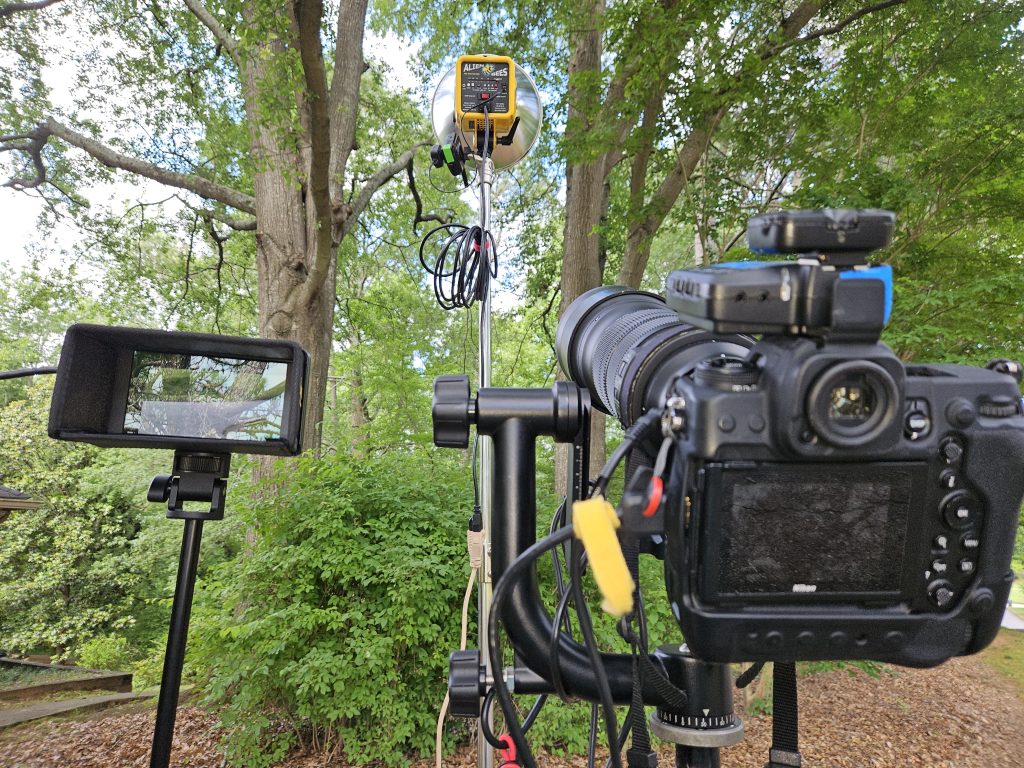
With this new configuration, I unlocked the potential to shoot at high shutter speeds ranging from 1/1000 to an astonishing 1/8000, effectively balancing the strobe lighting with the ambient daylight. Gone were the intrusive shadows, replaced by crisp, well-lit images showcasing the Red-Shouldered Hawks’ beauty in all their glory.
Using strobes as a fill light outside can significantly improve the accuracy of color temperature in outdoor photography. By supplementing natural light with controlled artificial light, photographers can mitigate the inconsistencies often caused by changing weather conditions and varying times of day. Strobes emit a consistent color temperature, ensuring that the subject is evenly illuminated with precise hues, regardless of external factors. This enhances the image’s overall aesthetic and facilitates post-processing adjustments by providing a stable foundation of color temperature for a more seamless editing workflow.
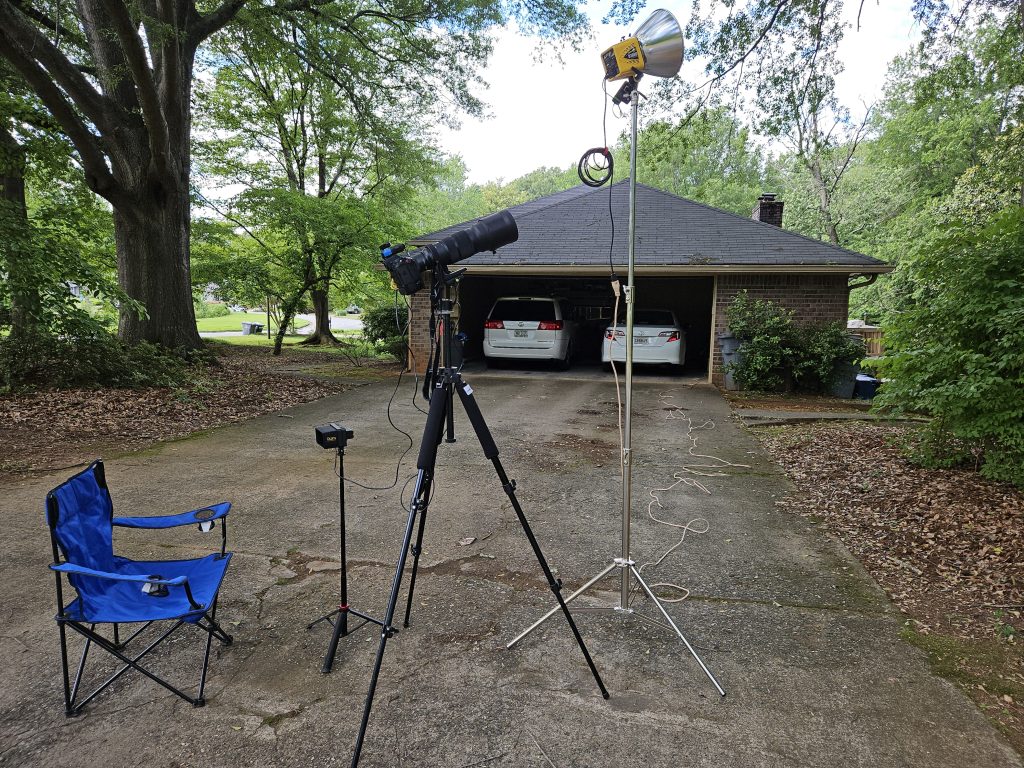
In the spirit of transparency and progress, I’ll compare my previous photographs and those captured using the strobes. Through side-by-side visuals, you’ll witness the remarkable difference in clarity, detail, and overall image quality achieved through this innovative lighting technique.
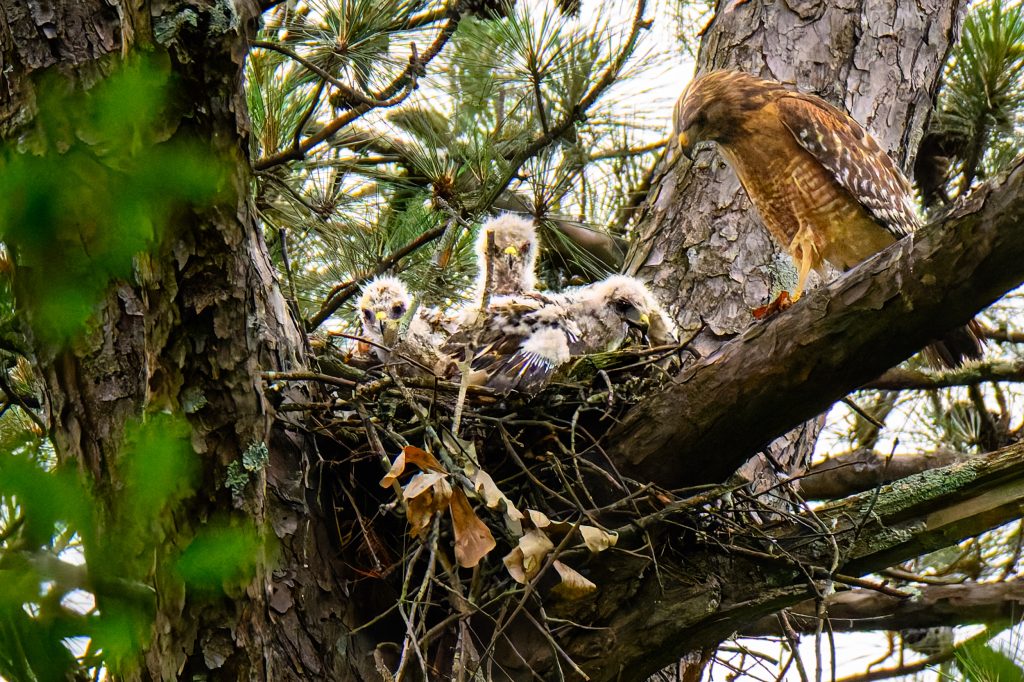
However, the most gratifying aspect of this endeavor is the tangible improvement in the quality of my images. By embracing technology and pushing the boundaries of traditional wildlife photography, I’ve been able to elevate my craft and capture the essence of these magnificent birds with unprecedented clarity and depth.
So, without further ado, I invite you to join me on this journey of exploration and discovery. Let’s delve into wildlife photography, where innovation meets artistry, and every click of the shutter unveils a new dimension of beauty and wonder.
